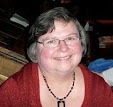 This was the November selection for the Flower Library Book Club. I had had it on my "to read" bookshelf for a while and was so glad that I could now move it to the top of the list. I took it to London in October and was able to read it on the train to Cardiff and then on the one to Oxford. It was the perfect background setting for another English read.
This was the November selection for the Flower Library Book Club. I had had it on my "to read" bookshelf for a while and was so glad that I could now move it to the top of the list. I took it to London in October and was able to read it on the train to Cardiff and then on the one to Oxford. It was the perfect background setting for another English read.The year is 1946 and Juliet Ashton has survived the war in London despite having lost everything when her apartment was bombed. She receives a letter from Dawsey Adams from Guernsey, a Channel Island. He found her name in a book by Charles Lamb and wanted a recommendation of any other books by him. It was then she learned of the GLPPS, founded as a ruse to cover up a pig roast during the German occupation of the island. (Pigs were counted and could not be consumed by the inhabitants of the island.) The epistolary novel takes shape as the residents of Guernsey correspond with Juliet and she with them, her publisher, and best friend.
The character development and point of view is what makes this novel work. We are treated to the thoughts and daily activities of those who formed the literary society except for the founder herself - Elizabeth, who was arrested and taken to France. As the residents of the island join in on the correspondence the reader is treated to the nuances of a new group of friends. There is Dawsey, Isola who posses a stack of her grandmother's letters, Eben Ramsey, reader of Shakespeare, Will Thisbee, creator of the pie, and Remy who travels from France to join the group. Interspersed with these letters are Juliet's letters to Sydney, her publisher, and Sophie, Sydney's sister and Juliet's sounding board. Also present is the spirit of Jane Austen whose books are brought to mind even as one reads GLPPS. As Juliet's affinity toward her Guernsey correspondents develops, so does a romantic encounter with the rich and suave Mark. We peek into this relationship as the letters, often 3 or 4 on the same day, are exchanged between the couple. We know what's best for her and we hope that she will eventually discover that for herself.
A nagging question: Why does Sophie not write back to Juliet?
Can I just say that this is one of the most refreshing and engaging books that I have read recently. One laughs, cries, empathizes, and is inspired by the life that these islands residents have lead. I wanted to read more and not have the book end. I wish I had stumbled on this map before reading the book. Would that I could journey to Guernsey and immerse myself in the history of this island. A grand read!



















